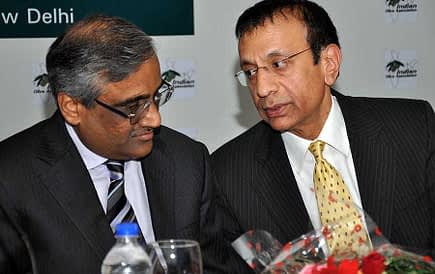
The Ambassadors of Spain, Italy, Portugal, Syria and Jordan were honored guests at the annual meeting of the Indian Olive Association last week.
The Friday evening meeting at a New Delhi hotel was presided over by Indian Olive Association President VN Dalmia and his executive council which includes executives of Indian subsidiaries of multinationals Borges, Cargill and Del Monte.
The keynote speaker was Kishore Biyani, CEO of Future Group, a privately held company that runs chains of large discount department stores and warehouse stores.
Biyani said his company would “take the lead” in promoting olive oil to the Indian consumer. Olive oil sales at his “Big Bazaar” chain were set to double each year, according to a statement, and reach an estimated Rs. 100 crores (about $20 million) in the year 2014.
Dalmia reported that olive oil sales in India were growing annualy at a rate of more than 50 percent. He expected the 2011 import total to reach 6,000 tons, up from 4,000 in 2010.
These are nevertheless incredibly small numbers for India’s 1.2 billion people who each eat, on average, 1/4 of a tablespoon per year of oil derived from olives.
Most of the sales were for olive pomace oil — a grade of edible oil chemically extracted from the leftover pits and skin that cannot be called “olive oil” according to international standards.
Dalmia’s company recently sponsored a clinical trial conducted by the Diabetes Foundation of India and the National Diabetes, Obesity & Cholesterol Foundation that showed the health benefits for Indians who switched to olive pomace or canola oil from other oils that did not have a high content of monounsaturated fats.
Repeating a point he’s been known to make, Dalmia said most Indians thought olive oil was expensive, but when one considers that you need just “one-third as much as other edible oils and it could be reused three times” that it was, in fact, one-ninth of its retail price.
Rajneesh Bhasin, the association’s vice president and head of Borges India, added that a few years ago China was consuming only a few thousand tons of olive oil, much like India, but today consumed about 30,000 tons and he expected Indians to follow the same pattern in the next few years.

